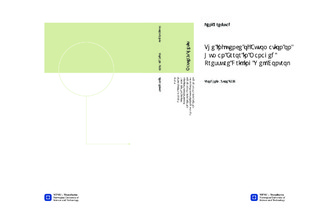| dc.description.abstract | This thesis aims to explain and discuss the concept of automation in Managed Pressure Drilling systems and how this may influence the risk of well control incidents by its effect on human performance, focusing on human errors. The scope also includes examining the change of mode of automation during a well control incident, and recommend for a future mode of automation from a human factor point of view. An MPD system developed by Halliburton AS was used as a case, while the critical well control incident, lost circulation, formed the scenario. Researchers and technical professionals also shared their point of view in possibilities and challenges with MPD.The petroleum industry in seeking improved technologies to drill wells with a narrow drilling window, such as depleted reservoirs. Automated MPD has addressed this challenge with dedicated pressure control equipment. A higher mode of automation may reduce some risks, such as kicks and losses. However, it may also introduce new types of safety issues that affect the risk of human error. The Norwegian Petroleum Safety Authority requires systems and equipment to be designed such that the possibility of human error is limited. NORSOK S-002 requires the execution of analysis to ensure that the potential for human error in work systems is minimized. Methods utilized in this thesis were the functional analysis, FAST, allocation of functions, task analysis, and a systematic human error reduction and prediction approach, SHERPA.Functions required to maintain bottomhole pressure within drilling window was identified with FAST. The analysis demonstrated a more complex primary well control than for conventional drilling. Allocation of functions to human and machine illustrated that the backpressure pump and the MPD choke are automatically controlled during drilling (Mode 3 Management by Delegation), while manually handled during lost circulation (Mode 1 Assisted Manual Control). Allocation of functions and the task analysis clarified a frequent change in task responsibilities between the driller and the MPD operator. SHERPA found that errors made by the driller or the MPD operator could lead to failure of filling the well adequately with mud during losses, which initiates a kick. If the blowout-preventer is not closed, it could result in the kick developing into a blowout. A clear instruction on when to close the BOP was not found, with limitations of time and information available to confirm this finding.A future mode of automation in MPD systems is recommended to be similar to today s situation. The operation is then enhanced during drilling, while allowing the operator to intervene to varying degrees in case of abnormal operation. This could provide benefits such as improved situation awareness, workload, and overall human-machine performance. However, the increase in complexity, coupled with team-work previously not found in traditional drilling methods, may suggest that communication, interaction between different operators, and mistaken judgments are vulnerable aspects. These findings combined with changed task demands propose that automated MPD introduces new types of human errors that could influence risks prior to and during a well control incidents. Still, the MPD equipment offers a more precise adjustment of the bottomhole pressure proposing that some well control incidents are more simplified to handle. Incorporating the human element in major accident risk analyses has been suggested to be a promising path to improve safety and reliability in safety-critical system. | nb_NO |

